MaryAnn Bernal's Blog, page 284
May 6, 2014
The Phil Naessens Show: San Antonio Spurs Portland Trailblazers & Miami Heat Brooklyn Nets NBA Playoff Previews!
 On today’s Phil Naessens Show Dave Deckard joins Phil to preview the Portland Trailblazers San Antonio Spurs Western Conference Semi-Final, officiating and more Trailblazer news. Joe Mullinax joins Phil to preview the Eastern Conference Semi-Final matchup between the Miami Heat and Brooklyn Nets. Michael Erler joins Phil to preview the Western Conference Semi-Final matchup between the Spurs and the Trailblazers and more San Antonio Spurs news.
On today’s Phil Naessens Show Dave Deckard joins Phil to preview the Portland Trailblazers San Antonio Spurs Western Conference Semi-Final, officiating and more Trailblazer news. Joe Mullinax joins Phil to preview the Eastern Conference Semi-Final matchup between the Miami Heat and Brooklyn Nets. Michael Erler joins Phil to preview the Western Conference Semi-Final matchup between the Spurs and the Trailblazers and more San Antonio Spurs news.http://phillipnaessens.wordpress.com/2014/05/06/the-phil-naessens-show-san-antonio-spurs-portland-trailblazers-miami-heat-brooklyn-nets-nba-playoff-previews/

Published on May 06, 2014 05:21
History Trivia - Spanish and German troops sack Rome
May 6

973 Henry II (the Saint), the fifth and last Holy Roman Emperor of the Ottonian dynasty, was born.
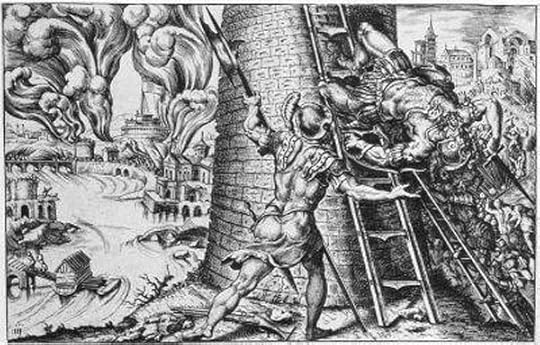
1527 Spanish and German troops sacked Rome, ending the Renaissance.
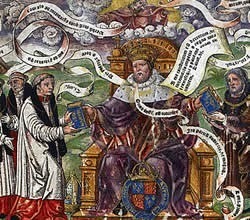
1536 King Henry VIII ordered English language Bibles to be placed in every church.


973 Henry II (the Saint), the fifth and last Holy Roman Emperor of the Ottonian dynasty, was born.

1527 Spanish and German troops sacked Rome, ending the Renaissance.

1536 King Henry VIII ordered English language Bibles to be placed in every church.

Published on May 06, 2014 05:05
May 5, 2014
The Wizard of Notts Recommends: Alan Sheehan Penalty Kick Notts County V's Oldham 2014 crowd mayhem !

Alan Sheehan's penalty equalises and (ultimately) sends Tranmere down to the fourth tier. Pandemonium ensues!
Want more football? Read Mark Barry's Ultra Violence and Violent Disorder for an insight into violence in sports.

http://www.amazon.com/Ultra-Violence-Mark-Barry-ebook/dp/B00EA82L5A/ref=sr_1_1?s=books&ie=UTF8&qid=1399300862&sr=1-1&keywords=ultra+violence+by+mark+barry

http://www.amazon.com/Violent-Disorder-Mark-Barry/dp/149123945X/ref=sr_1_1_bnp_1_pap?ie=UTF8&qid=1399300610&sr=8-1&keywords=violent+disorder+by+mark+barry

Published on May 05, 2014 07:41
The Ritual by Mark Barry is now available on Wattpad
Published on May 05, 2014 06:34
The Phil Naessens Show: Indiana Pacers Washington Wizards & Oklahoma City Thunder Los Angeles Clippers Semi Final Preview!
 On today’s Phil Naessens Show Tom Lewis joins Phil to preview the Indiana Pacers Washington Wizards Eastern Conference Semi-Final matchup and more Pacers talk. Craig Brenner joins Phil to preview the Oklahoma City Thunder Los Angeles Clippers Western Conference Semi-Final matchup and more Thunder talk. Kevin Lipe joins Phil to discuss the Memphis Grizzlies and what’s next after their first round loss to the Oklahoma City Thunder and more Grizzlies talk.
On today’s Phil Naessens Show Tom Lewis joins Phil to preview the Indiana Pacers Washington Wizards Eastern Conference Semi-Final matchup and more Pacers talk. Craig Brenner joins Phil to preview the Oklahoma City Thunder Los Angeles Clippers Western Conference Semi-Final matchup and more Thunder talk. Kevin Lipe joins Phil to discuss the Memphis Grizzlies and what’s next after their first round loss to the Oklahoma City Thunder and more Grizzlies talk.http://phillipnaessens.wordpress.com/author/phillyflash/

Published on May 05, 2014 05:46
History Trivia - King Charles I of England dissolves the Short Parliament.
May 5
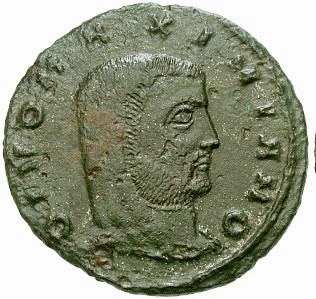
311 Gaius VM Galerius, emperor of Rome, died.
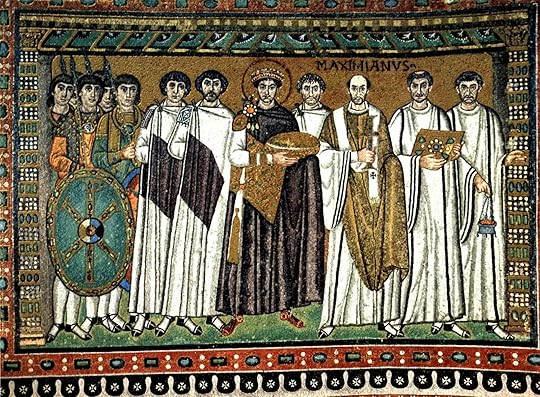
553 The Second Council of Constantinople began.

984 Gerberga of Saxony, Queen of Western Francia died.
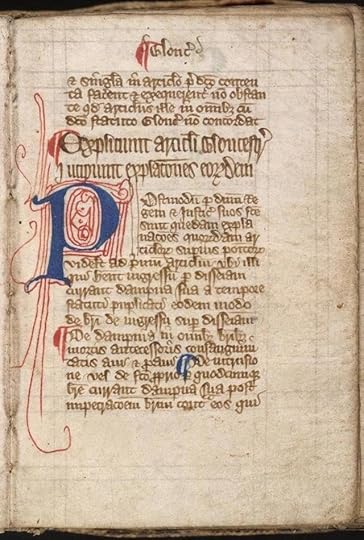
1215 Rebel barons renounced their allegiance to King John of England, which led to the signing of the Magna Carta.
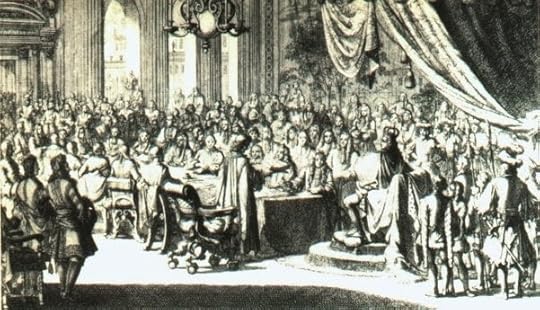
1640 King Charles I of England dissolved the Short Parliament.


311 Gaius VM Galerius, emperor of Rome, died.

553 The Second Council of Constantinople began.

984 Gerberga of Saxony, Queen of Western Francia died.

1215 Rebel barons renounced their allegiance to King John of England, which led to the signing of the Magna Carta.

1640 King Charles I of England dissolved the Short Parliament.

Published on May 05, 2014 05:43
May 4, 2014
Jesus Married? New Documentary Highlights Controversial Gospel
By Stephanie Pappas, Senior Writer
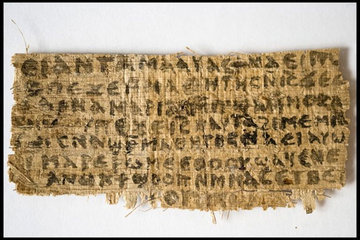
 This papyrus, said to be from ancient times, says that Jesus had a wife. Its discovery was announced in 2012 and new information uncovered by Live Science casts doubt on its origins.
This papyrus, said to be from ancient times, says that Jesus had a wife. Its discovery was announced in 2012 and new information uncovered by Live Science casts doubt on its origins.
Credit: Karen L. King, 2012 View full size image
A controversial scrap of parchment no bigger than a business card seems to suggest that Jesus Christ was married. A new documentary gives the full story of this so-called "Gospel of Jesus's Wife."
Revealed in 2012, the papyrus, written in the ancient Egpytian language Coptic, includes a line that says, "Jesus said to them, 'My wife...'" Karen King, a professor of divinity at Harvard Divinity School, made the announcement; the owner of the papyrus remains anonymous.
However, a recent Live Science investigation traces the papyrus to its previous owner, a man named Hans-Ulrich Laukamp who supposedly bought the scrap along with five others in 1963 in East Germany. René Ernest, representative of Laukamp's estate after his death in 2002, told Live Science that Laukamp was not a collector of antiquities and that he lived in West Berlin in 1963, separated from East Germany by the Berlin Wall. Another acquaintance of Laukamp's confirmed that he was not an antiquities collector or dealer. [Religious Mysteries: 8 Alleged Relics of Jesus]
Forged fragment?
The authenticity of the scrap remains in dispute. Test results released in April 2014 suggest that the papyrus is not a recent forgery, but those tests have not convinced all critics. One cause for skepticism is the style of the message: There are mistakes in the Coptic that seem very unlikely to have been made by a native scribe, according to a 2013 article in the journal Harvard Theological Review. The controversial phrase "my wife" is also written in heavier letters than the surrounding text, which strikes some as suspicious.
"If the forger had used italics in addition, one might be in danger of losing one's composure," Brown University Egyptologist Leo Depuydt wrote drily in the Harvard Theological Review.
The new documentary, which premiers on the Smithsonian Channel on Monday (May 8) at 8 p.m. ET/PT, follows the story from the first email King received from an anonymous collector asking her to look at the papyrus to the ensuing media storm, which included disavowals of the papyrus from the Vatican.
History and the gospels
The documentary is careful to explain that by calling the fragment a "gospel," King and her colleagues don't intend to say the contents are true. Even if the text is authentic and refers to Jesus's wife, that doesn't mean it is accurate; instead, the text might reflect debates in the early Christian church about the role of women. Another segment of the text refers to the possibility of a female disciple.
The text also refers to a woman named Mary, which could refer to Mary Magdalene, a woman mentioned in the Bible in the story of Jesus' death and resurrection, though King warns that Mary was a very common name at the time. The implications for the church could be far-reaching, said the Rev. Robin Griffiths-Jones, an Anglican priest and theologon from the Temple Church in London. [Read Translation of Papyrus]
"If evidence were to be taken seriously that Jesus was married, vast branches of Christian thought and discipline and life and observance would just evaporate," Griffiths-Jones said in the new documentary.
The documentary delves into church history in explaining the potential importance of the tiny papyrus scrap. Other fragments of the scrap are also translated: The phrase "my mother," and later, "deny Mary is worthy." King sees the scraps as part of a larger story in which Jesus might be defending his female follower — who is perhaps also his wife.
Other texts showing Jesus as a husband may have been destroyed as the early Christian church took on celibacy as a requirement for priesthood, King said.
Still, a single documentary can't resolve the real burning question: Is the papyrus fake or not? Given the focus on King and her colleagues, viewers might come away from the Smithsonian's documentary feeling more confident in the fragment than some researchers would prefer. For now, however, the question of whether Jesus really had a wife remains a mystery.
http://www.livescience.com/45325-gospel-jesus-wife-documentary.html


 This papyrus, said to be from ancient times, says that Jesus had a wife. Its discovery was announced in 2012 and new information uncovered by Live Science casts doubt on its origins.
This papyrus, said to be from ancient times, says that Jesus had a wife. Its discovery was announced in 2012 and new information uncovered by Live Science casts doubt on its origins.Credit: Karen L. King, 2012 View full size image
A controversial scrap of parchment no bigger than a business card seems to suggest that Jesus Christ was married. A new documentary gives the full story of this so-called "Gospel of Jesus's Wife."
Revealed in 2012, the papyrus, written in the ancient Egpytian language Coptic, includes a line that says, "Jesus said to them, 'My wife...'" Karen King, a professor of divinity at Harvard Divinity School, made the announcement; the owner of the papyrus remains anonymous.
However, a recent Live Science investigation traces the papyrus to its previous owner, a man named Hans-Ulrich Laukamp who supposedly bought the scrap along with five others in 1963 in East Germany. René Ernest, representative of Laukamp's estate after his death in 2002, told Live Science that Laukamp was not a collector of antiquities and that he lived in West Berlin in 1963, separated from East Germany by the Berlin Wall. Another acquaintance of Laukamp's confirmed that he was not an antiquities collector or dealer. [Religious Mysteries: 8 Alleged Relics of Jesus]
Forged fragment?
The authenticity of the scrap remains in dispute. Test results released in April 2014 suggest that the papyrus is not a recent forgery, but those tests have not convinced all critics. One cause for skepticism is the style of the message: There are mistakes in the Coptic that seem very unlikely to have been made by a native scribe, according to a 2013 article in the journal Harvard Theological Review. The controversial phrase "my wife" is also written in heavier letters than the surrounding text, which strikes some as suspicious.
"If the forger had used italics in addition, one might be in danger of losing one's composure," Brown University Egyptologist Leo Depuydt wrote drily in the Harvard Theological Review.
The new documentary, which premiers on the Smithsonian Channel on Monday (May 8) at 8 p.m. ET/PT, follows the story from the first email King received from an anonymous collector asking her to look at the papyrus to the ensuing media storm, which included disavowals of the papyrus from the Vatican.
History and the gospels
The documentary is careful to explain that by calling the fragment a "gospel," King and her colleagues don't intend to say the contents are true. Even if the text is authentic and refers to Jesus's wife, that doesn't mean it is accurate; instead, the text might reflect debates in the early Christian church about the role of women. Another segment of the text refers to the possibility of a female disciple.
The text also refers to a woman named Mary, which could refer to Mary Magdalene, a woman mentioned in the Bible in the story of Jesus' death and resurrection, though King warns that Mary was a very common name at the time. The implications for the church could be far-reaching, said the Rev. Robin Griffiths-Jones, an Anglican priest and theologon from the Temple Church in London. [Read Translation of Papyrus]
"If evidence were to be taken seriously that Jesus was married, vast branches of Christian thought and discipline and life and observance would just evaporate," Griffiths-Jones said in the new documentary.
The documentary delves into church history in explaining the potential importance of the tiny papyrus scrap. Other fragments of the scrap are also translated: The phrase "my mother," and later, "deny Mary is worthy." King sees the scraps as part of a larger story in which Jesus might be defending his female follower — who is perhaps also his wife.
Other texts showing Jesus as a husband may have been destroyed as the early Christian church took on celibacy as a requirement for priesthood, King said.
Still, a single documentary can't resolve the real burning question: Is the papyrus fake or not? Given the focus on King and her colleagues, viewers might come away from the Smithsonian's documentary feeling more confident in the fragment than some researchers would prefer. For now, however, the question of whether Jesus really had a wife remains a mystery.
http://www.livescience.com/45325-gospel-jesus-wife-documentary.html

Published on May 04, 2014 14:15
Replica King Tut Tomb Unveiled in Egypt
By Megan Gannon, News Editor
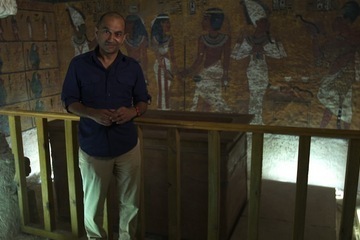
 BBC presenter Rajan Datar stands inside a replica of King Tut's tomb.
BBC presenter Rajan Datar stands inside a replica of King Tut's tomb.
Credit: BBC World News View full size image
King Tutankhamun's tomb in Egypt went undisturbed for 3,000 years. But in the 90 years since its discovery, the ancient burial chamber has been ravaged by tourism.
To prevent further damage and deterioration, conservationists hope a newly unveiled, life-size replica of the tomb will ease the flow of traffic to the original. To coincide with the public opening, BBC World News is set to air a 30-minute documentary on the mock tomb this weekend, titled "A New Tomb for Tutankhamun: A Travel Show Special," hosted by broadcaster Rajan Datar.
Often referred to as the "boy king," Tut lived between roughly 1343 and 1323 B.C., during a period known as Egypt's New Kingdom. When he died at 19, Tut was buried in the Valley of the Kings, a sprawling necropolis for pharaohs, along the Nile opposite Luxor. The tomb was lost to history until 1922, when British archaeologist Howard Carter first opened it, finding the linen-wrapped mummy of Tutankhamun in a grand sarcophagus. [Photos: The Life and Death of King Tut]
The discovery was sensational. Tutankhamun became the world's most famous pharaoh. But the influx of tourists who flocked to his tomb took its toll. Because of constant changes in humidity, as well as the breath and body oils of people, the walls are crumbling.
The prospect of sealing Tut's tomb to the public has been thought to be "commercial suicide for Luxor," Datar says in the documentary. But in an attempt to mitigate the damage from tourism, conservationists began making a replica in 2009. They painstakingly laser-scanned each tiny speck of sand and paint crack inside the tomb and used technology like 3D printing to make facsimile as close to the original as possible.
Political upheaval in Egypt stalled initial plans to install the replica in 2011. In December 2013, the components of the mock tomb were finally pulled out of storage in a basement in Cairo and moved to Luxor. It officially opened on Wednesday (April 30).
On camera, tourists as well as guides and locals expressed doubt that many people would come all the way to the Valley of the Kings and choose to see the facsimile over the real thing. The replica's creators, however, are adamant that a facsimile is, for now, the most sustainable way for visitors to enjoy the tomb, since there is no restoration technology that can undo the damage to the original.
"People want to puts screens of glass. People want to put in air conditioning systems," Adam Lowe, a technical artist with the Factum Foundation, said in the documentary. "But the tomb was never meant to be visited … the simple truth is the tombs can't take that number of visitors."
The Factum Foundation created the replica with the Society of the Friends of the Royal Tombs in Egypt and the Egyptian Tourism and Antiquities ministries.
http://www.livescience.com/45327-replica-king-tut-tomb-unveiled.html

 BBC presenter Rajan Datar stands inside a replica of King Tut's tomb.
BBC presenter Rajan Datar stands inside a replica of King Tut's tomb.Credit: BBC World News View full size image
King Tutankhamun's tomb in Egypt went undisturbed for 3,000 years. But in the 90 years since its discovery, the ancient burial chamber has been ravaged by tourism.
To prevent further damage and deterioration, conservationists hope a newly unveiled, life-size replica of the tomb will ease the flow of traffic to the original. To coincide with the public opening, BBC World News is set to air a 30-minute documentary on the mock tomb this weekend, titled "A New Tomb for Tutankhamun: A Travel Show Special," hosted by broadcaster Rajan Datar.
Often referred to as the "boy king," Tut lived between roughly 1343 and 1323 B.C., during a period known as Egypt's New Kingdom. When he died at 19, Tut was buried in the Valley of the Kings, a sprawling necropolis for pharaohs, along the Nile opposite Luxor. The tomb was lost to history until 1922, when British archaeologist Howard Carter first opened it, finding the linen-wrapped mummy of Tutankhamun in a grand sarcophagus. [Photos: The Life and Death of King Tut]
The discovery was sensational. Tutankhamun became the world's most famous pharaoh. But the influx of tourists who flocked to his tomb took its toll. Because of constant changes in humidity, as well as the breath and body oils of people, the walls are crumbling.
The prospect of sealing Tut's tomb to the public has been thought to be "commercial suicide for Luxor," Datar says in the documentary. But in an attempt to mitigate the damage from tourism, conservationists began making a replica in 2009. They painstakingly laser-scanned each tiny speck of sand and paint crack inside the tomb and used technology like 3D printing to make facsimile as close to the original as possible.
Political upheaval in Egypt stalled initial plans to install the replica in 2011. In December 2013, the components of the mock tomb were finally pulled out of storage in a basement in Cairo and moved to Luxor. It officially opened on Wednesday (April 30).
On camera, tourists as well as guides and locals expressed doubt that many people would come all the way to the Valley of the Kings and choose to see the facsimile over the real thing. The replica's creators, however, are adamant that a facsimile is, for now, the most sustainable way for visitors to enjoy the tomb, since there is no restoration technology that can undo the damage to the original.
"People want to puts screens of glass. People want to put in air conditioning systems," Adam Lowe, a technical artist with the Factum Foundation, said in the documentary. "But the tomb was never meant to be visited … the simple truth is the tombs can't take that number of visitors."
The Factum Foundation created the replica with the Society of the Friends of the Royal Tombs in Egypt and the Egyptian Tourism and Antiquities ministries.
http://www.livescience.com/45327-replica-king-tut-tomb-unveiled.html

Published on May 04, 2014 14:09
Solved! How Ancient Egyptians Moved Massive Pyramid Stones
By Denise Chow, Sci-Tech Editor
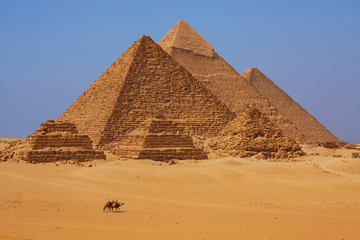
 The Pyramids of Giza, built between 2589 and 2504 BC.
The Pyramids of Giza, built between 2589 and 2504 BC.
Credit: Dan Breckwoldt | Shutterstock View full size image
The ancient Egyptians who built the pyramids may have been able to move massive stone blocks across the desert by wetting the sand in front of a contraption built to pull the heavy objects, according to a new study.
Physicists at the University of Amsterdam investigated the forces needed to pull weighty objects on a giant sled over desert sand, and discovered that dampening the sand in front of the primitive device reduces friction on the sled, making it easier to operate. The findings help answer one of the most enduring historical mysteries: how the Egyptians were able to accomplish the seemingly impossible task of constructing the famous pyramids.
To make their discovery, the researchers picked up on clues from the ancient Egyptians themselves. A wall painting discovered in the ancient tomb of Djehutihotep, which dates back to about 1900 B.C., depicts 172 men hauling an immense statue using ropes attached to a sledge. In the drawing, a person can be seen standing on the front of the sledge, pouring water over the sand, said study lead author Daniel Bonn, a physics professor at the University of Amsterdam. [Photos: Amazing Discoveries at Egypt's Giza Pyramids]
"Egyptologists thought it was a purely ceremonial act," Bonn told Live Science. "The question was: Why did they do it?"
Bonn and his colleagues constructed miniature sleds and experimented with pulling heavy objects through trays of sand.
When the researchers dragged the sleds over dry sand, they noticed clumps would build up in front of the contraptions, requiring more force to pull them across.
Adding water to the sand, however, increased its stiffness, and the sleds were able to glide more easily across the surface. This is because droplets of water create bridges between the grains of sand, which helps them stick together, the scientists said. It is also the same reason why using wet sand to build a sandcastle is easier than using dry sand, Bonn said.
across the surface. This is because droplets of water create bridges between the grains of sand, which helps them stick together, the scientists said. It is also the same reason why using wet sand to build a sandcastle is easier than using dry sand, Bonn said.
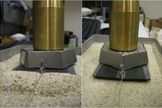 [image error]
[image error]
 A large pile of sand accumulates in front of the sled when it is pulled over dry sand (left). On the wet sand (right) this does not happen.
A large pile of sand accumulates in front of the sled when it is pulled over dry sand (left). On the wet sand (right) this does not happen.
Credit: Daniel Bonn/University of AmsterdamView full size imageBut, there is a delicate balance, the researchers found.
"If you use dry sand, it won't work as well, but if the sand is too wet, it won't work either," Bonn said. "There's an optimum stiffness."
The amount of water necessary depends on the type of sand, he added, but typically the optimal amount falls between 2 percent and 5 percent of the volume of sand.
"It turns out that wetting Egyptian desert sand can reduce the friction by quite a bit, which implies you need only half of the people to pull a sledge on wet sand, compared to dry sand," Bonn said.
The study, published April 29 in the journal Physical Review Letters, may explain how the ancient Egyptians constructed the pyramids, but the research also has modern-day applications, the scientists said. The findings could help researchers understand the behavior of other granular materials, such as asphalt, concrete or coal, which could lead to more efficient ways to transport these resources.
http://www.livescience.com/45285-how-egyptians-moved-pyramid-stones.html

 The Pyramids of Giza, built between 2589 and 2504 BC.
The Pyramids of Giza, built between 2589 and 2504 BC.Credit: Dan Breckwoldt | Shutterstock View full size image
The ancient Egyptians who built the pyramids may have been able to move massive stone blocks across the desert by wetting the sand in front of a contraption built to pull the heavy objects, according to a new study.
Physicists at the University of Amsterdam investigated the forces needed to pull weighty objects on a giant sled over desert sand, and discovered that dampening the sand in front of the primitive device reduces friction on the sled, making it easier to operate. The findings help answer one of the most enduring historical mysteries: how the Egyptians were able to accomplish the seemingly impossible task of constructing the famous pyramids.
To make their discovery, the researchers picked up on clues from the ancient Egyptians themselves. A wall painting discovered in the ancient tomb of Djehutihotep, which dates back to about 1900 B.C., depicts 172 men hauling an immense statue using ropes attached to a sledge. In the drawing, a person can be seen standing on the front of the sledge, pouring water over the sand, said study lead author Daniel Bonn, a physics professor at the University of Amsterdam. [Photos: Amazing Discoveries at Egypt's Giza Pyramids]
"Egyptologists thought it was a purely ceremonial act," Bonn told Live Science. "The question was: Why did they do it?"
Bonn and his colleagues constructed miniature sleds and experimented with pulling heavy objects through trays of sand.
When the researchers dragged the sleds over dry sand, they noticed clumps would build up in front of the contraptions, requiring more force to pull them across.
Adding water to the sand, however, increased its stiffness, and the sleds were able to glide more easily
 across the surface. This is because droplets of water create bridges between the grains of sand, which helps them stick together, the scientists said. It is also the same reason why using wet sand to build a sandcastle is easier than using dry sand, Bonn said.
across the surface. This is because droplets of water create bridges between the grains of sand, which helps them stick together, the scientists said. It is also the same reason why using wet sand to build a sandcastle is easier than using dry sand, Bonn said. [image error]
[image error]
 A large pile of sand accumulates in front of the sled when it is pulled over dry sand (left). On the wet sand (right) this does not happen.
A large pile of sand accumulates in front of the sled when it is pulled over dry sand (left). On the wet sand (right) this does not happen.Credit: Daniel Bonn/University of AmsterdamView full size imageBut, there is a delicate balance, the researchers found.
"If you use dry sand, it won't work as well, but if the sand is too wet, it won't work either," Bonn said. "There's an optimum stiffness."
The amount of water necessary depends on the type of sand, he added, but typically the optimal amount falls between 2 percent and 5 percent of the volume of sand.
"It turns out that wetting Egyptian desert sand can reduce the friction by quite a bit, which implies you need only half of the people to pull a sledge on wet sand, compared to dry sand," Bonn said.
The study, published April 29 in the journal Physical Review Letters, may explain how the ancient Egyptians constructed the pyramids, but the research also has modern-day applications, the scientists said. The findings could help researchers understand the behavior of other granular materials, such as asphalt, concrete or coal, which could lead to more efficient ways to transport these resources.
http://www.livescience.com/45285-how-egyptians-moved-pyramid-stones.html

Published on May 04, 2014 14:03
Neanderthals aren't grunting, club-wielding idiots – we are
For years our ancestors have been the victim of an ugly stereotype, so let's start their rebranding here
Martha Gill
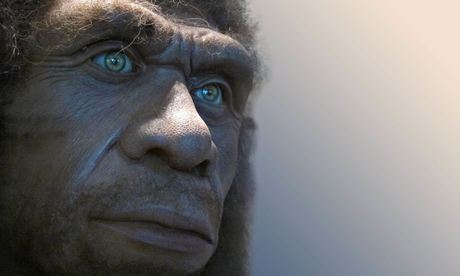
'People had been comparing Neanderthals to their successors, rather than their contemporaries. Which is rather like assuming I am more advanced than my parents because I know how to work an iPhone.' Photograph: Jose A Astor/AlamyThey've long been maligned as grunting, club-wielding idiots, but apparently we've got Neanderthals all wrong. Misled by their simple tools (clubs) and simple language (grunting) we have stereotyped them as primitive beings – but this couldn't be further from the truth. In fact, according to recent research, Neanderthals were no less intelligent than their modern human contemporaries.
After careful study of archaeological records, scientists in the Netherlands found evidence to suggest that Neanderthals were just as advanced in culture, weaponry and hunting as our human forebears. According to those scientists, the misunderstanding came about because people had been comparing Neanderthals to their successors, who had more advanced tools, rather than their contemporaries. Which is rather like assuming I am more advanced than my parents because I know how to work an iPhone. But this doesn't make my parents any less intelligent … just obsolete and unable to function in this modern, fast-paced world.
So, what we have here is an ugly, ugly stereotype; a stereotype that needs to be quashed. As ever, the Guardian is the perfect place to start that process – and perhaps even to "rebrand" the Neanderthal. After all, when you really think about it, aren't we the real club-wielding prehistoric creatures?
Take some of our most pressing modern concerns. To pick just one example, let's look at the unpalatable truth about quinoa. All evidence suggests that Neanderthal food was both organic and locally sourced. But unlike modern man, Neanderthals were not "consciously ethical" consumers so preoccupied with "personal health, animal welfare and reducing their carbon 'foodprint'" that they drove up the price of a staple grain beyond the grasp of local Bolivians. No.
Not for them, either, the errors of cupcake fascism. They refrained from such products which, as has been pointed out, "treat their audience as children, and more specifically the children of the middle classes – perfect special snowflakes full of wide-eyed wonder and possibility" and thereby "succeed as expressions of a desire on behalf of consumers to always and for ever be children, by telling consumers not only that this is OK, but also that it is, to a real degree, possible." Which was really wise of them.
And neither were Neanderthal women held up to ridiculously high beauty standards. They were not impelled to shave their legs in order to live up to unreachable social ideals concocted by a controlling patriarchy.
And finally, Neanderthals had the skills that will really matter post-rewilding. When George Monbiot has his way and wolves, bears, bison and lynx roam Britain (sheep cast finally into the furthest pit of hell), we'll be relying on our hunting nous. Only then, as we square up to a hungry grizzly, will we know who the club-wielding idiots truly are.
http://www.theguardian.com/commentisfree/2014/may/02/neanderthals-arent-grunting-club-wielding-idiots-stereotype
Martha Gill

'People had been comparing Neanderthals to their successors, rather than their contemporaries. Which is rather like assuming I am more advanced than my parents because I know how to work an iPhone.' Photograph: Jose A Astor/AlamyThey've long been maligned as grunting, club-wielding idiots, but apparently we've got Neanderthals all wrong. Misled by their simple tools (clubs) and simple language (grunting) we have stereotyped them as primitive beings – but this couldn't be further from the truth. In fact, according to recent research, Neanderthals were no less intelligent than their modern human contemporaries.
After careful study of archaeological records, scientists in the Netherlands found evidence to suggest that Neanderthals were just as advanced in culture, weaponry and hunting as our human forebears. According to those scientists, the misunderstanding came about because people had been comparing Neanderthals to their successors, who had more advanced tools, rather than their contemporaries. Which is rather like assuming I am more advanced than my parents because I know how to work an iPhone. But this doesn't make my parents any less intelligent … just obsolete and unable to function in this modern, fast-paced world.
So, what we have here is an ugly, ugly stereotype; a stereotype that needs to be quashed. As ever, the Guardian is the perfect place to start that process – and perhaps even to "rebrand" the Neanderthal. After all, when you really think about it, aren't we the real club-wielding prehistoric creatures?
Take some of our most pressing modern concerns. To pick just one example, let's look at the unpalatable truth about quinoa. All evidence suggests that Neanderthal food was both organic and locally sourced. But unlike modern man, Neanderthals were not "consciously ethical" consumers so preoccupied with "personal health, animal welfare and reducing their carbon 'foodprint'" that they drove up the price of a staple grain beyond the grasp of local Bolivians. No.
Not for them, either, the errors of cupcake fascism. They refrained from such products which, as has been pointed out, "treat their audience as children, and more specifically the children of the middle classes – perfect special snowflakes full of wide-eyed wonder and possibility" and thereby "succeed as expressions of a desire on behalf of consumers to always and for ever be children, by telling consumers not only that this is OK, but also that it is, to a real degree, possible." Which was really wise of them.
And neither were Neanderthal women held up to ridiculously high beauty standards. They were not impelled to shave their legs in order to live up to unreachable social ideals concocted by a controlling patriarchy.
And finally, Neanderthals had the skills that will really matter post-rewilding. When George Monbiot has his way and wolves, bears, bison and lynx roam Britain (sheep cast finally into the furthest pit of hell), we'll be relying on our hunting nous. Only then, as we square up to a hungry grizzly, will we know who the club-wielding idiots truly are.
http://www.theguardian.com/commentisfree/2014/may/02/neanderthals-arent-grunting-club-wielding-idiots-stereotype

Published on May 04, 2014 13:55




